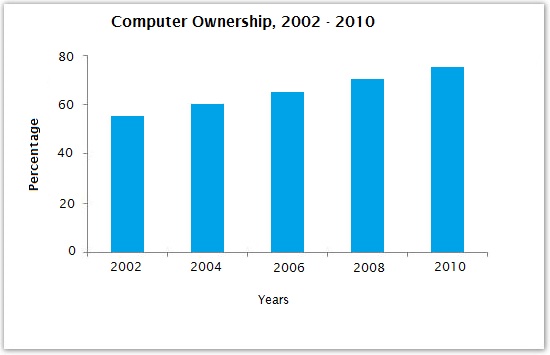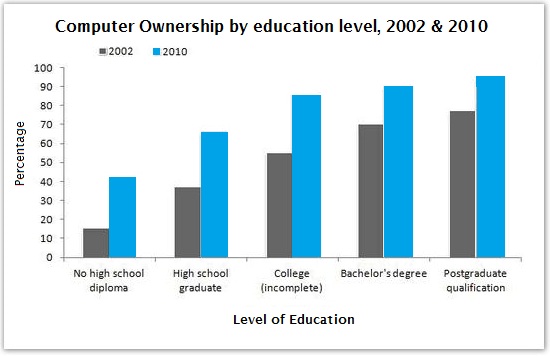Task 1
population between 2002 and 2010, and by level of education for the years 2002 and
2010.
Summarise the information by selecting and reporting the main features, and make
comparisons where relevant.


Sample Answer ▼
The bar charts show data about computer ownership, with a further classification by level of education, from 2002 to 2010.
A steady but significant rise can be seen in the percentage of the population that owned a computer over the period. Just over half the population owned computers in 2002, whereas by 2010 three out of four people had a home computer.
An analysis of the data by level of education shows that higher levels of education correspond to higher levels of computer ownership in both of those years. In 2002, only around 15% of those who did not finish high school had a computer but this figure had trebled by 2010. There were also considerable increases, of approximately 30
percentage points, for those with a high school diploma or an unfinished college education (reaching 65% and 85% respectively in 2010). However, graduates and postgraduates proved to have the greatest level of ownership in 2010, at 90% and 95% respectively, 20 percentage points higher than in 2002.
The last decade has seen a substantial growth in computer ownership in general, and across all educational levels.
Comments
Post a Comment